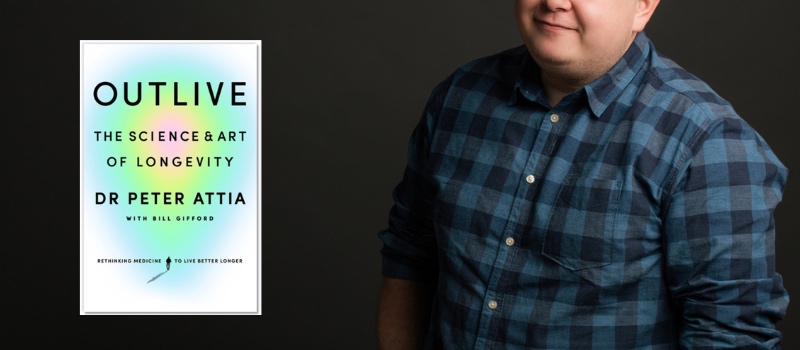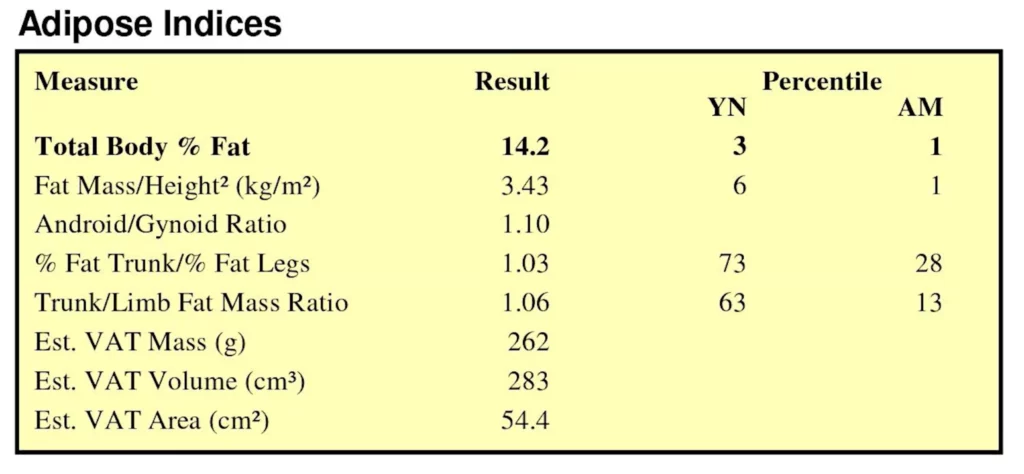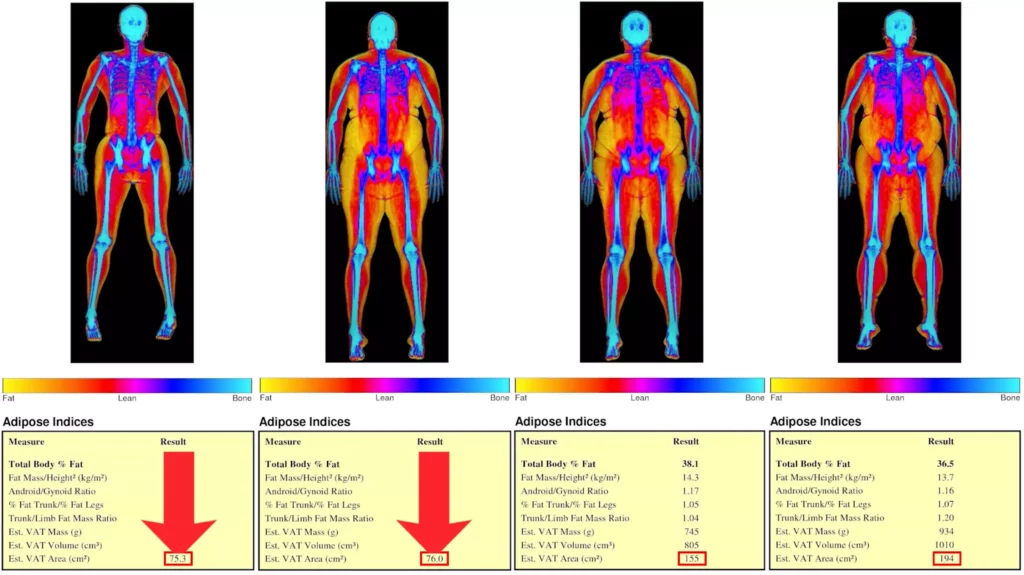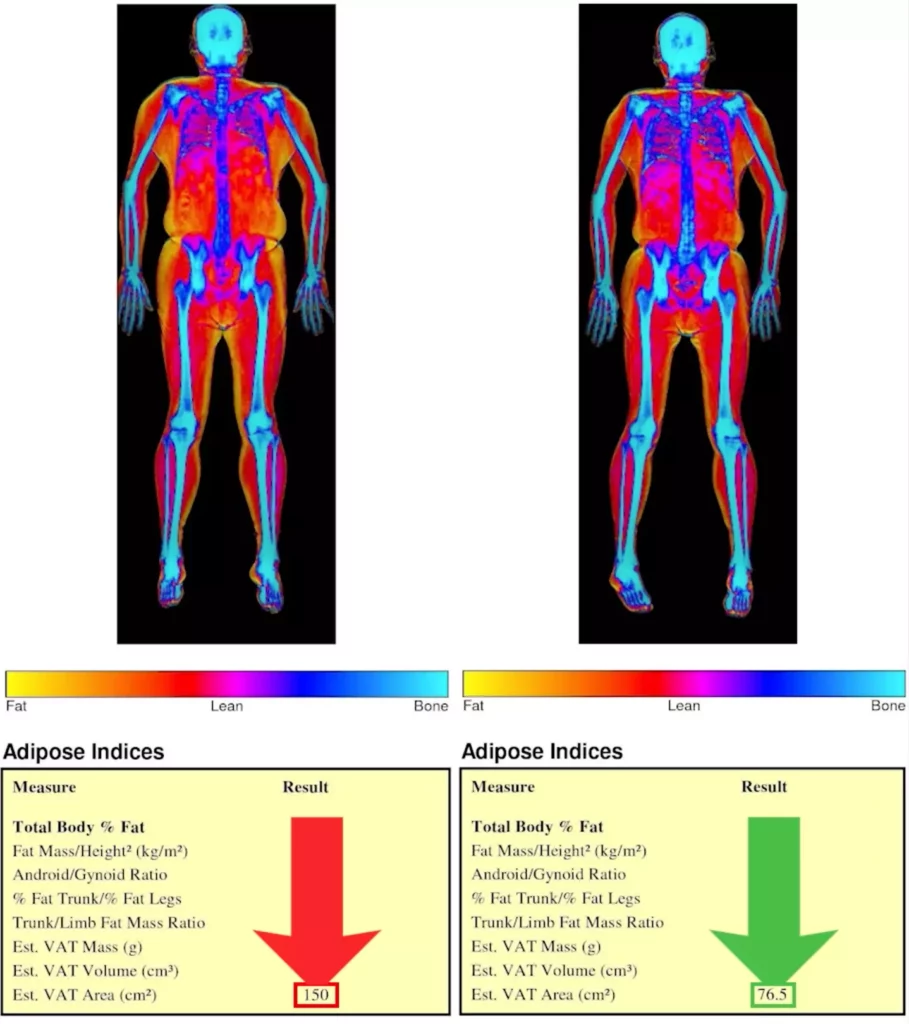
BLOG
Dr Peter Attia’s DEXA metrics #1 – Visceral Fat

In bestselling book ‘Outlive – The Science and Art of Longevity’, Dr Peter Attia advises us to get regular DEXA scans and focus on three measurements other than body fat percentage. These are visceral fat, bone density and muscle mass.
Why? Because these three metrics, according to Attia, are closely correlated with how long you will live.
We’ve given you a general overview of those three DEXA scan metrics in this blog, but we will dive deeper into each one in individual blogs, starting here with visceral fat.
Attia’s bathtub analogy and ‘spillover’ fat
In ‘Outlive’, Attia likens a person’s normal, subcutaneous fat storage to a bathtub. Our changing level of body fat is like the water level in the bath, he says, rising and falling depending on how fast water flows in from the tap and how quickly it drains down the plughole. When we eat ‘at maintenance’ (calories in = calories out), our fat and weight stay the same, akin to the water level in the bath remaining constant because it fills and empties at the same rate.
But it’s when the taps are fully opened and the bathtub fills and spills over (that is, we eat way more calories than we burn) that problems arise. When our subcutaneous stores fill up, fat spills over into your muscle tissue, blood, liver and pancreas, and around your heart and other organs.
This excess, overspill fat is linked with what Attia calls ‘The Four Horsemen’ – heart disease, cancer, dementia and diabetes. The fat that accumulates around your organs is visceral fat, which Attia describes as “anything but harmless”.
He says our risk from visceral fat is based on our own genetic capacity to store subcutaneous fat – some people have a bathtub, others a full-size jacuzzi, others a small bucket.
On the Bodyscan DEXA scan report, your visceral fat result is shown by the last number in the Adipose Tissue (body fat) table on the first page. In the extract below, the visceral fat result is 54.4.

Diagnostic thresholds have been applied, such that a measurement below 100 is considered normal, between 100-160 is ‘increased risk’ and above 160 is classed as ‘high risk.
Visceral fat typically increases with age
Bodyscan data shows that visceral fat increases with age, and once you reach the 50th percentile for overall body fat, visceral fat will double between your 20s and your 50s.
Being ‘average’ might sound OK but in Outlive, Attia says, “It doesn’t take much visceral fat to cause problems.” Even a 40-year-old man with average total body fat “would be considered at exceptionally high risk for cardiovascular disease and type 2 diabetes, in the top 5 percent of risk for your age and sex.”
Interestingly, Bodyscan data shows that visceral fat can remain very low regardless of age. At the lowest percentiles there is little change in the value. In contrast, the highest percentiles see visceral fat climbing higher and higher – for men and women over 50, visceral fat scores are double those for the under-30s.
In all percentiles, women suffer from a faster rate of increase in visceral fat as they age, particularly after menopause, and at the highest percentiles, women end up with as much visceral fat as men.
As well as age, individual genetics and ethnicity influences how much visceral fat you carry. Using his bathtub analogy, Attia says that different ethnicities, and individuals of the same ethnicity, may have a bathtub, a full-size jacuzzi or just a 5-gallon bucket before subcutaneous fat stores are full.
Ethnicity affects visceral fat
The DEXA scan images below are all of men in their 30s. The two in the middle both have very high body fat – around 47kg. The middle-left man is black, with a visceral fat result of 76; the middle-right man is white, with a visceral fat result more than double, at 155.

On the far right is a South Asian man with lower total fat (40kg) but visceral of 194. And on the far left another South Asian man in his 30s whose total body fat is 18kg, almost 30kg less than the other three but he has the same visceral fat result as the black man (75.3 to 76).
Bodyscan’s observations tie in with Attia’s, who says, “This is a generalisation, but people of Asian descent tend to have much lower capacity to store fat, on average, than Caucasians.”
Genetics will affect your fat distribution and therefore how much visceral fat you have. If your body stores fat in the upper body, your torso, indicated by high distribution ratios on your DEXA scan report, you have a much greater chance of high visceral fat. If you carry fat more in your arms and legs, then your visceral fat will almost certainly be lower.
Because visceral fat is, to use Peter Attia’s term, ‘spillover’ or excess fat, the simplest way to reduce it is to reduce your overall body fat by restricting calorie intake and increasing calorie burn (in Attia’s analogy, turn the taps down and let the bathtub begin to empty).
In general, you lose visceral fat at a faster rate than overall body fat.
Below is a male Bodyscan customer aged 60 who in just two months cut calories to reduce his body fat by a third (nearly 10kg) and reduced his visceral fat by half – from 150 to 76.

Reduce visceral fat by being more active
As well as creating a calorie deficit through reduced food intake, physical activity is also effective for reducing visceral fat, to a much greater extent than it is for reducing subcutaneous fat, because visceral fat is metabolically active. Conversely, one big factor for increasing visceral fat seems to be inactivity – that is, a sedentary lifestyle.
That’s because Attia says one of the first places this spillover fat penetrates is your “muscle tissue, contributing directly to insulin resistance in the muscle.”
So, “If a person is not physically active, and they are not consuming energy via their muscles, this insulin resistance driven by fat-spillover develops much more quickly.” This becomes a self-fulfilling prophecy – more fat makes us less active, meaning more fat spillover, leading to more visceral fat.
So, in summary, visceral fat is a result of excess body fat spilling over from subcutaneous stores into muscle fibres, your liver, pancreas and bloodstream and accumulating around other vital organs.
Visceral fat is worthy of the name “bad fat” because of its strong links with heart disease, cancer, Alzheimer’s, and type-2 diabetes together with related metabolic dysfunction.
The simplest way to reduce visceral fat and improve lifespan and healthspan is to reduce overall body fat through calorie restriction and increased exercise.
Philip Chant
Bodyscan

